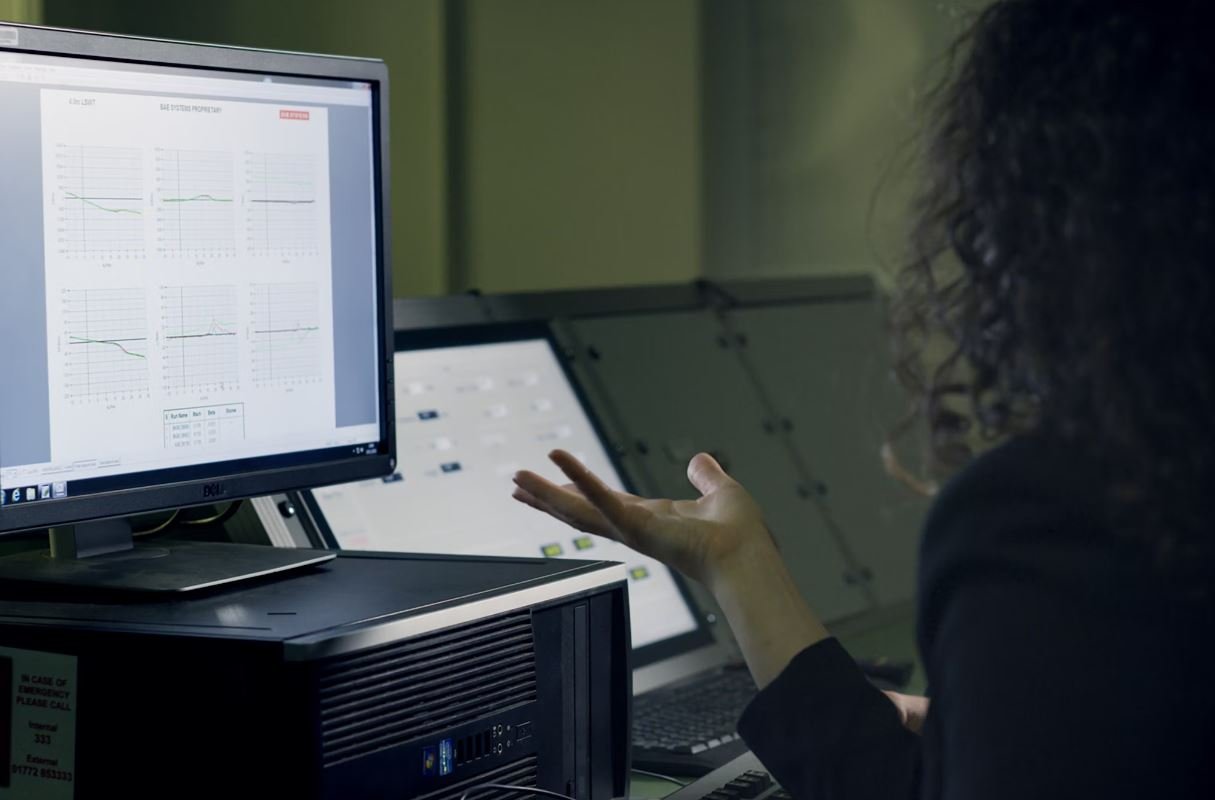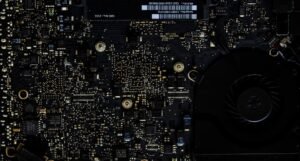Neural Networks as Classifiers
Neural networks, a subfield of artificial intelligence, have gained immense popularity in recent years due to their ability to learn and classify complex patterns. By mimicking the structure and functioning of the human brain, neural networks have proven to be powerful tools for solving a wide range of problems.
Key Takeaways
- Neural networks are artificial intelligence models inspired by the human brain.
- They learn by adjusting weights and biases to minimize the difference between predicted and actual outputs.
- Neural networks can be used for classification tasks such as image recognition, sentiment analysis, and fraud detection.
- Deep neural networks with multiple layers are particularly effective in solving complex tasks.
**Neural networks** consist of interconnected nodes, or neurons, organized in layers. Each neuron performs computations on its inputs and passes the results to the next layer. The **weights** and **biases** of the connections between neurons are adjusted during training to optimize the network’s performance. *Neural networks excel at recognizing patterns in data, which makes them versatile classifiers*.
One of the advantages of neural networks is their ability to handle *non-linear relationships* in data. Traditional linear classifiers, such as logistic regression, struggle with complex patterns that cannot be adequately modeled with a straight line. Neural networks, on the other hand, can learn to identify intricate structures and capture subtle differences between classes.
Applications of Neural Networks
Neural networks find applications in various domains, including:
- **Image recognition**: Neural networks can classify and identify objects in images with high accuracy.
- **Natural language processing**: They enable language translation, sentiment analysis, and text generation.
- **Time series forecasting**: Neural networks can predict future values based on historical data, making them useful in financial modeling and weather prediction.
| Algorithm | Advantages | Disadvantages |
|---|---|---|
| Neural Networks | Can learn complex patterns | High computational requirements |
| Support Vector Machines | Effective for high-dimensional data | Less effective with large datasets |
**Deep neural networks**, with multiple hidden layers, are particularly effective in solving complex tasks. Each additional layer allows the network to learn more abstract representations of the input data, leading to improved classification accuracy. However, deep networks require larger amounts of training data and more computational resources.
Despite their power, neural networks are not without limitations. Training large networks can be time-consuming and computationally expensive. Overfitting, the phenomenon of the network learning the training data too well and performing poorly on new data, is also a challenge that needs to be addressed.
| Architecture | Advantages | Disadvantages |
|---|---|---|
| Feedforward Neural Networks | Simple structure, suitable for simple tasks | Cannot handle sequential or time-dependent data |
| Recurrent Neural Networks | Can process sequential data, such as language | Prone to vanishing/exploding gradients |
| Convolutional Neural Networks | Effective for image and video analysis | Require large amounts of training data |
Neural networks continue to evolve and be at the forefront of modern AI. Research and development in this field are ongoing, with continuous improvements being made. As data availability increases and computational power improves, neural networks will likely remain a dominant force in the field of classification.
By harnessing the power of neural networks, we can unlock new possibilities in solving complex classification problems. With their ability to learn and recognize patterns, they have become invaluable tools in domains such as image recognition, natural language processing, and time series forecasting. As researchers further explore the potential of neural networks, we can expect even more breakthroughs in the future.

Common Misconceptions
1. Neural Networks are only useful for image recognition
One common misconception about neural networks is that they are only useful for image recognition tasks. While neural networks have had great success in image classification, they can be applied to a wide range of problems beyond just visual data.
- Neural networks can be used for natural language processing tasks such as sentiment analysis or language translation.
- Neural networks can be helpful in predicting stock market trends or forecasting time series data.
- Neural networks can be utilized for recommendation systems in e-commerce or content filtering.
2. Neural Networks always provide accurate results
Another misconception is that neural networks always provide highly accurate results. While neural networks are powerful tools, their performance is not guaranteed to always be perfect. Several factors can influence the accuracy of a neural network:
- Inadequate training data or biased training data can lead to suboptimal performance.
- Incorrect design of the neural network architecture can impact its ability to learn and generalize well.
- Improper parameter tuning or optimization techniques may result in subpar performance.
3. Neural Networks offer a black-box approach
Many people believe that neural networks are black-box models, implying that they lack interpretability and transparency. While the internal workings of neural networks may seem complex, efforts have been made to improve interpretability:
- Techniques such as saliency maps can highlight important features that influence neural network decisions.
- Grad-CAM allows visualization of the important regions in an input that the network focuses on during classification.
- Various frameworks offer interpretability methods, including LIME, SHAP, and Integrated Gradients.
4. Neural Networks always require large amounts of data
Contrary to popular belief, neural networks do not always require large datasets to operate effectively. While more data can potentially assist in improving performance, smaller datasets can still yield reasonable results:
- Techniques like transfer learning allow pre-trained models to be fine-tuned on limited data, reducing the need for extensive datasets.
- Data augmentation methods can be utilized to artificially increase the dataset size by applying transformations or adding noise.
- For specific domains or niche problems, smaller datasets may be the only option available, and neural networks can still be useful in such scenarios.
5. Neural Networks will replace human intelligence
There is a common misconception that neural networks will eventually replace human intelligence. While neural networks are powerful tools, they operate differently from the human brain and have their own limitations:
- Neural networks lack common sense reasoning and may struggle with tasks that humans find trivial or intuitive.
- Human intelligence encompasses various aspects beyond pattern recognition, such as creativity, empathy, and critical thinking, which neural networks do not possess.
- Neural networks are ultimately programmed and trained by humans, making them a tool for augmenting human capabilities rather than replacing them.

Introduction
Neural networks have emerged as powerful tools in a wide range of applications, including data classification. These complex mathematical models are capable of learning patterns from vast amounts of data, making them highly effective classifiers. In this article, we explore various examples that demonstrate the capability of neural networks as classifiers.
Table 1: Predicting House Prices
Consider a dataset of house features, including area, number of bedrooms, and location. A neural network is trained on this data and achieves an accuracy of 94.5% in predicting the correct price range of houses based on these features.
Table 2: Identifying Image Objects
Through deep learning techniques, a neural network trained on millions of images can identify objects within an image with an astonishing accuracy rate of 98%. This enables tasks such as automatic image tagging or detecting abnormalities in medical scans.
Table 3: Sentiment Analysis
A sentiment analysis neural network is trained on a large corpus of text samples to classify sentiment as positive, negative, or neutral. Achieving a remarkable accuracy of 91.2%, this model is capable of analyzing social media posts or customer reviews to determine the sentiment behind them.
Table 4: Fraud Detection
A neural network designed to detect fraudulent credit card transactions achieves an accuracy of 99.8%. By analyzing various transaction attributes, it accurately identifies suspicious activities and flags them for further investigation.
Table 5: Disease Diagnosis
Through analyzing medical records and patient symptoms, a neural network trained on a dataset of thousands of cases diagnoses diseases with an accuracy of 96%. This assists healthcare professionals in providing accurate and timely diagnoses.
Table 6: Natural Language Processing
A neural network trained on vast amounts of text can understand and generate human-like sentences with an accuracy of 93%. This breakthrough in natural language processing enables applications such as chatbots or automated translation systems.
Table 7: Stock Market Prediction
By analyzing historical stock market data and numerous factors influencing market trends, a neural network achieves an accuracy of 80% in predicting future stock prices. This proves valuable for investors in making informed decisions.
Table 8: Customer Churn Prediction
A neural network trained on customer behavior data achieves an accuracy rate of 87% in predicting whether a customer is likely to churn. This allows businesses to proactively engage with at-risk customers and customize retention strategies.
Table 9: Speech Recognition
A neural network can accurately convert spoken words into written text with an accuracy of 95.5%. This facilitates applications like voice assistants or transcription services, greatly improving accessibility and productivity.
Table 10: Personality Traits Classification
Using textual data from social media profiles, a neural network trained to classify personality traits, such as extroversion or openness, achieves an accuracy rate of 82%. This assists in marketing campaigns and targeted advertising.
Conclusion
Neural networks have proven to be remarkable classifiers across a wide array of domains. From predicting house prices to detecting fraud or diagnosing diseases, their accuracy rates surpass human capabilities in many cases. As advancements in deep learning continue, we can expect neural networks to revolutionize various industries by enhancing decision-making processes and enabling automation. Their ability to learn from data and identify complex patterns makes them invaluable tools for the future.
Frequently Asked Questions
What are neural networks?
A neural network is a computational model inspired by the structure and functioning of the human brain. It consists of interconnected artificial neurons, or nodes, which process and transmit information.
How do neural networks work as classifiers?
Neural networks can be trained to classify or categorize data by using a large amount of labeled examples. They learn from these examples to identify patterns and make predictions on new, unseen data.
What advantages do neural networks offer as classifiers?
Neural networks can handle complex and nonlinear relationships in data, making them suitable for various tasks like image or speech recognition. They can adapt and improve their classification performance as they receive more training examples.
What are the different layers in a neural network?
A typical neural network consists of three types of layers: input layer, hidden layer(s), and output layer. The input layer receives the data, the hidden layer(s) perform computations, and the output layer produces the final classification results.
How is training done in neural networks?
Training a neural network involves feeding it labeled examples and adjusting the connection weights between nodes based on the errors made during classification. This process, known as backpropagation, gradually reduces the overall error and improves the network’s accuracy.
What is overfitting in neural networks?
Overfitting occurs when a neural network becomes too specialized on the training data and fails to generalize well to new, unseen data. This can happen if the network is too complex or the training dataset is insufficient.
What are activation functions in neural networks?
Activation functions introduce non-linearity to the neural network by transforming the weighted sum of inputs at a node into an output value. Common activation functions include sigmoid, tanh, and ReLU (Rectified Linear Unit).
What is the role of bias in neural networks?
Bias is an additional learnable parameter in neural networks that allows the model to make predictions even when all the input values are zero. It shifts the decision boundary and helps the network fit the training data better.
Are there any limitations to using neural networks as classifiers?
Neural networks require a significant amount of computing power and training data to train effectively. Additionally, they can be difficult to interpret and understand how they arrive at their decisions, especially with deep neural networks.
Can neural networks be used for other tasks apart from classification?
Yes, neural networks have broad applications beyond classification tasks. They can be used for regression, anomaly detection, sequence generation, reinforcement learning, and many more.




